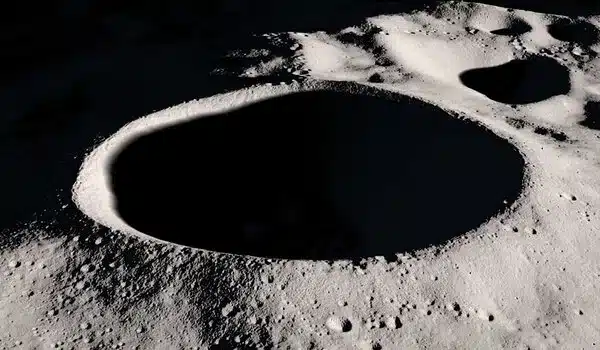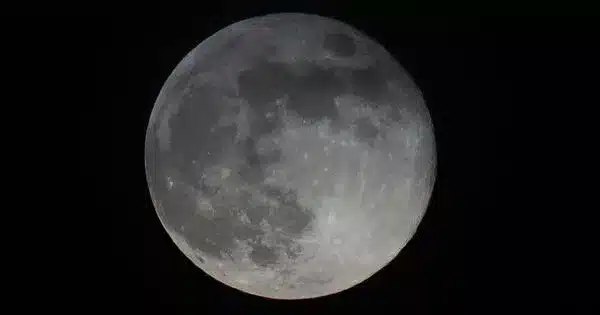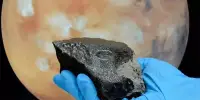The amount of water on the Moon has piqued scientists’ curiosity because of the implications for future lunar research and even human colonization. Initial findings revealed the presence of considerable water ice in the Moon’s permanently shadowed regions, particularly at its poles. These discoveries were made possible by sensors such as Chandrayaan-1’s Moon Mineralogy Mapper (M3) and the Lunar Reconnaissance Orbiter (LRO).
A team of researchers recently calculated that the majority of the Moon’s permanently shadowed regions (PSRs) are at most 3.4 billion years old and can contain relatively fresh deposits of water ice. Water resources are seen as critical for long-term exploration of the Moon and beyond, however, these findings show that existing estimates for cold-trapped ice are exaggerated.
Dr. Raluca Rufu of the Southwest Research Institute and colleagues have calculated that the majority of the Moon’s permanently shadowed regions (PSRs) are at most 3.4 billion years old and can contain relatively fresh deposits of water ice. Water resources are seen as critical for long-term exploration of the Moon and beyond, however these findings show that existing estimates for cold-trapped ices are exaggerated.
The Moon’s current spin axis tilt, along with its orbital inclination (the angle to Earth’s orbital plane) and the Sun’s low angle, results in permanent shadows at its poles. PSRs are some of the coldest regions in the solar system, allowing them to store volatile substances such as water ice that would otherwise rapidly change from a solid to a gas in the harsh, airless sunlight that falls in most other places on the Moon.
Our findings suggest that Cabeus crater evolved into a PSR less than a billion years ago. The various volatiles detected in the LCROSS plume indicate that ice-trapping continued into relatively recent times.
Norbert Schörghofer
“We think the Earth-Moon system formed following a giant impact between early Earth and another protoplanet,” said Rufu, a Sagan Fellow who is the second author of a Science Advances paper. “The Moon formed from the impact-generated debris disk, migrating away from Earth over time. Around 4.1 billion years ago the Moon experienced a major spin axis reorientation when its tilt reached high angles before it damped down to the configuration we see today. As the axial tilt decreased, PSRs appeared at the poles and grew over time.”
The scientists calculated the Moon’s axial tilt over time using AstroGeo22, a novel Earth-Moon evolution simulation program. The scientists assessed the evolution of the darkened patches over time using surface height measurements from the Lunar Orbital Altimeter Laser data (LOLA).
“The time evolution of the Moon-Earth distance remained an unsolved problem for half a century,” he remarked. “However, these new geological proxies for the history of the Earth-Moon system allow us to calculate the Moon’s axial tilt and the extent of PSRs over time.”

NASA crashed the two-ton Atlas Centaur rocket body, which was part of the Lunar Crater Observation and Sensing Satellite (LCROSS), near the Moon’s south pole in 2009. It collided with the floor of Cabeus crater, resulting in a jet of debris that was analyzed for the presence of water and other compounds in the lunar regolith. The impact was watched by a shepherding satellite four minutes behind the Centaur and numerous Earth-orbiting satellites, including the Hubble Space Telescope.
“Our findings suggest that Cabeus crater evolved into a PSR less than a billion years ago. The various volatiles detected in the LCROSS plume indicate that ice-trapping continued into relatively recent times,” stated Norbert Schörghofer, the Planetary Science Institute’s lead author.
“Impacts and outgassing are potential sources of water, but they peaked early in lunar history before the current PSRs existed.” The amount of water ice that could be trapped in the lunar polar regions is mostly determined by the age of PSRs. The amount of water ice in PSRs is especially essential in planning for forthcoming crewed and uncrewed missions to the Moon in search of water.”
This vital resource can be used to produce air and rocket fuel as well as to sustain human life. NASA and other organizations intend to send rovers and astronauts to investigate the water ice within PSRs.














